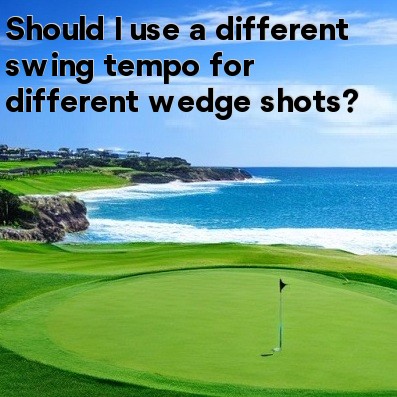
In golf, should I use a different swing tempo for different wedge shots?
Golf is a game of precision and technique, where even the smallest adjustments can greatly impact the outcome of a shot. When it comes to wedge shots, which require a delicate touch and accuracy around the greens, it is vital to consider the appropriate swing tempo.
Swing tempo refers to the rhythm and speed at which a golfer executes their swing. It encompasses the backswing, transition, and downswing, and it is crucial for achieving consistent and reliable results. While many golfers may think that using the same swing tempo for all wedge shots is the best approach, there are certain factors that suggest otherwise.
- Distance: One of the main reasons for adjusting your swing tempo with different wedge shots is the varying distances you are trying to achieve. For shorter shots, such as pitching and chipping, a slower tempo can help control the distance and provide better feel around the greens. On the other hand, for longer shots such as full wedge swings, a slightly faster tempo can generate more clubhead speed for increased distance.
- Lie and Conditions: Another factor influencing swing tempo is the lie of the ball and the conditions of the grass or sand. When faced with a tight lie or hard-packed surface, a quicker tempo may be required to ensure clean contact and prevent the club from digging into the ground. Conversely, when playing off a fluffy lie or from deep rough, a slower tempo can help prevent the club from getting stuck and allow for a clean strike.
- Shot Trajectory: Different wedge shots require different trajectories. A higher shot, such as a flop or lob shot, typically requires a slower tempo to allow for a more vertical swing path and increased loft. On the other hand, a lower trajectory shot, such as a bump and run, may benefit from a slightly quicker tempo to keep the ball running along the ground.
It is important to note that adjusting swing tempo does not mean making drastic changes to your overall swing mechanics. Rather, it is about making subtle modifications to your timing and rhythm based on the specific shot at hand.
Developing a feel for the appropriate swing tempo for different wedge shots requires practice and experimentation. It is recommended to spend time on the practice range, working on various distances and shot types, while consciously adjusting your swing tempo.
A helpful drill is to imagine a metronome ticking at different speeds to guide your timing. Start with a slower tempo for shorter shots, gradually increasing the speed for longer shots. Over time, you will develop a sense of the ideal swing tempo for different wedge shots, allowing you to execute them with more confidence and precision.
In conclusion, using a different swing tempo for different wedge shots can have a significant impact on your performance around the greens. Factors such as distance, lie and conditions, as well as shot trajectory, all play a role in determining the appropriate tempo. By practicing and developing a feel for these nuances, you will enhance your ability to control the distance, trajectory, and overall effectiveness of your wedge shots.




